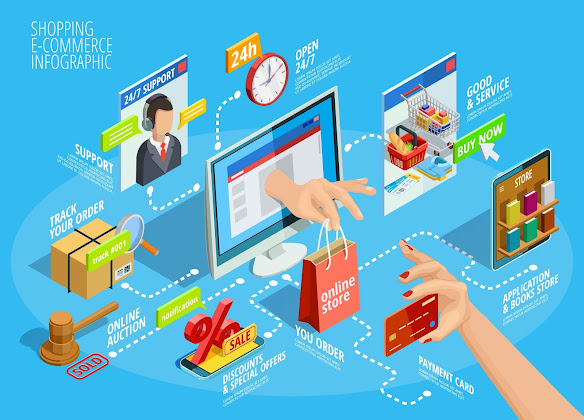Ecommerce Business Models
Describe the Ecommerce Revenue Models?
There are many types of eCommerce revenue models.
Advertisement sales model - In the advertisement sales model, a website creates revenue by obtaining a wide number of users that will then be subjected to ads.
Sales revenue model - Companies earn money from the sales revenue model by selling products, content, or services to the customer.
Subscription revenue model - In the subscription revenue model, a website providing content or services charges a subscription fee for the option to continue to any or all of its offers.
Free sales model - Firms deliver basic facilities or products for free under the free sales model, while charging a fee for specialized or exclusive features.
Transaction fee revenue - A business earns a commission for approving or performing a transaction in the transaction fee revenue model.
Affiliate revenue model - In the affiliate revenue model, web pages redirect users to other websites in exchange for a referral charge or percentage of the revenue on any purchases made.
What are the Forms of Ecommerce?
There are 4 major Forms of Ecommerce:
Business to Business(B2B): The businesses do business with each other here. It is not the actual user who is concerned. Therefore, online sales include only suppliers, wholesalers, sellers, etc.
Business to Consumer(B2C): The business will offer its products or services directly to the customer. Consumers will visit their websites to look at items, videos, reviews, to read them. They eventually put their order and the company directly delivers the goods to them. Amazon, Flipkart, Daraz, etc. are common examples.
Consumer to Consumer(C2C): Consumers are in touch with each other directly. There is no business involved. It lets individuals directly sell their personal products and belongings to an interested person. Traded products are typically vehicles, boats, appliances, etc. This model is accompanied by OLX, Quikr, etc.
Consumer to Business(C2B): This is the opposite of B2C. The consumer provides the business with a product or a certain service. Say, for instance, an IT freelancer who demonstrates and sells his software to a corporation. It will be a trade involving C2B.
What are the Advantages of Disintermediation?
The Advantages of Disintermediation is that there are cost benefits and margin benefits that can be realized by removing middlemen as for example my business model is Business to Consumer, Products are sold to consumers directly so many retailers or wholesalers are removed. This will decrease the cost and increase profit. Electronic customer relations and customer interaction are formed with the help of Internet-based means of communication. Full access to the consumer enables consumer actions to be evaluated and customer expectations to be measured. Information about the consumer review helps in the necessary growth of the product and service range. I will easily know how many consumers will actually buy my product and know do consumers prefer the product. So, Specific goods and services can be sold to individual customers based on the desire of the customers to pay.



Impressive post, Thanks a lot
ReplyDelete